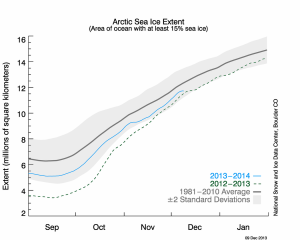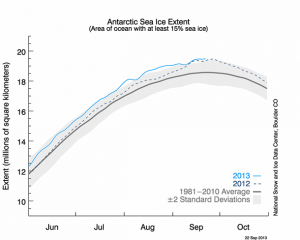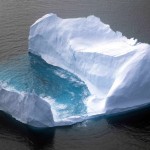Last summer (September 2012) was the all-time low for ice levels in the artic. Only about 3.5 million square kilometers were left, whereas the average low point is about 6.5 million square kilometers between 1981 and 2010. At the same time on the other side of the world the Antartic is reaching record ice levels of 19.5 million square km versus an average of 18.5. Still that leaves 2 million square km of ice that dissapeared, about 8 times the size of the United Kingdom.The National Snow and Ice Data Center in the USA keeps day-to-day track of the extend of ice levels in both the Artic and the Antartic. The graphs for both poles are shown below:
 The Artic ice has strongly recovered from their all-time-low in 2012, with current levels being about 2 million square km larger than last years’ low. Combining this with the additional ice on the antartic leaves a similar ice level as seen during 1981 and 2010 on average.
The Artic ice has strongly recovered from their all-time-low in 2012, with current levels being about 2 million square km larger than last years’ low. Combining this with the additional ice on the antartic leaves a similar ice level as seen during 1981 and 2010 on average.

The Antartic ice has seen record years in both 2012 and 2013. It clearly shows that the climate is changing, but for now the doom stories of ice-free oceans seem a bit off, although the US navy is predicting an ice-free artic by 2016 according to the Guardian.
Question remains what will happen in future years, will we see new record lows and an ice free Artic or will things return to normal? Maybe a better question is if we want to risk creating a world where the Artic is ice-free. We think not, and believe the sun should shine on solar panels rather than risk melting the Artic.
